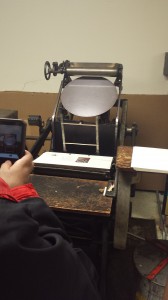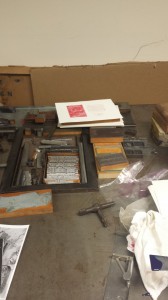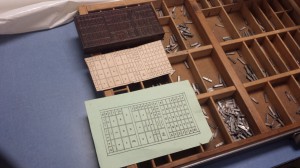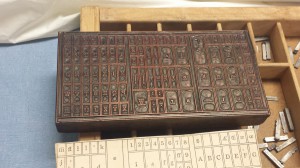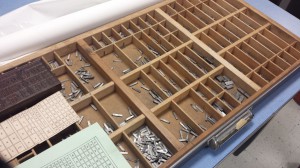On last Wednesday, we had visited the room of letterpress at the city tech. In there, we saw lots of materials of letterpress and typing machines. At the same time, it gave us experiences of printing paper by ourselves, so we had better understanding to learn about the history and development of typography.
The initial printer was invented by a man named Johann Gutenberg in 1456. He was the first person who made the duplicating movable type printing with metal type, which offered mass-producing of books especially Bible in western world. Because of that, the price of books was decreased and Johann Gutenberg’s movable typing machine instead “one wood block for one page” gradually. Based on that, we knew that the invention of Johann Gutenberg influenced human history by expanding the spread of civilization.
During this letterpress field trip, we had seen a Chandler & Price printing machine (figure. 1.0) which was the oldest letterpress printing at the city tech. Currently, it was hard to see this kind of printing machine because Chandler & Price printing was already stopped production in 1964. After the staff of the letterpress room introduced the history of this printing machine, he showed us the operation of this letterpress printing.
At first, the staff put the metal letter types in the frame which are upside down, from left to right, and then he used wooden block pieces to keep the letters and lines in the same space (figure. 1.1). After that, the staff placed the frame into the chase bed of the machine (figure. 1.2). Secondly, before the staff started the machine, he put the printing ink on the surface of the ink disc, and the color of ink disc spread to the impression through rollers pass over the ink disc. Afterwards, when the machine was working, he quickly placed the paper into the platen (figure. 1.2), and pulled the throw-off lever. Finally, the paper pressed the form, and then he took out the paper from the platen. Besides that, the staff also demonstrated the differences of two kinds of printing paper; the first one was smooth paper, and the other one was higher bright paper. Compare to the first kind of printing paper, the higher bright paper was smoother, heavier and offered better color contrasts (See figure. 1.3).
Overall, I realized that until now, letterpress printing still has great spreading impact of propaganda in people’s daily life and helps to connect the communication of the world, such as books, newspapers, magazines, and posters. In addition, I enjoyed visiting the letterpress room because I had printed paper myself by using the Chandler & Price Printing machine, and had a better understanding about typography, the operation of letterpress printing, and history of printing machine, which was more fun than textbook learning
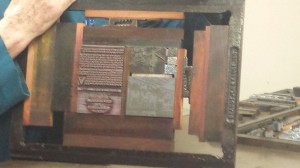 Figure.1.1
Figure.1.1 Figure. 1.2
Figure. 1.2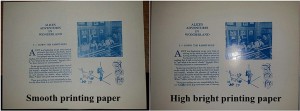 Figure. 1.3
Figure. 1.3

